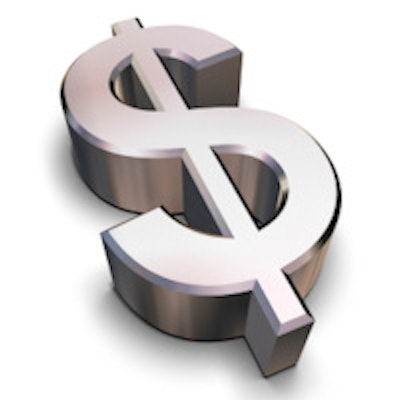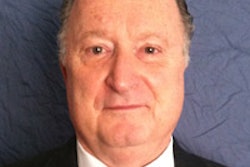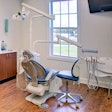
Recently, I was asked by a client of mine -- a licensed California dentist -- to review a practice for sale in Southern California.
Purchase prices for dental practices are usually predicated on some percentage less than whole of prior-year collections. Not this one. With $650,000 of 2012 revenues, the asking price was $750,000 -- a multiple of 1.15 over prior-year revenues. Earnings before interest, taxes, depreciation, and amortization (EBITDA) was not produced, but net income was at a whopping $250,000 -- a net income margin of 38.47%.
 Thomas Climo, PhD, is a dental practice management consultant and a past professor of economics in England.
Thomas Climo, PhD, is a dental practice management consultant and a past professor of economics in England.Of course, the financial statement did not contain "officer's salary." With hygiene production at 25% of revenues, this meant that $487,500 of doctor production had no cost of goods or services sold matched against it, thereby allowing for pure profit from the production. The only costs were operating, admin, interest, taxes, depreciation, and amortization -- totaling $400,000.
But the total costs were not complete. Missing was the amortization on the outstanding loan, together with a confused bundling of depreciation with amortization adjustments. In addition, cost of goods sold or services provided was, as indicated above, absent.
Worse, the numbers in the income statement did not tally with the numbers provided in the practice's 2012 tax return. Amortization, depreciation, and some administrative cost items were all different. Officer salary was provided at $40,000 in the tax returns, and a $160,000 "dividend distribution" to the owner appeared on about page 15 of the tax return. Since no balance sheet was provided (where no doubt the officer salary and distribution to the officer would be hidden), the result was the 38.47% net margin -- true fiction, as if the revenue of the doctor in the income statement could be produced by magic without cost.
Once I deducted from the so-called $250,000 of net income an associate dentist rate of 30% against the $487,500 of production ($146,250), put in the true amortization number, revised the depreciation number, and corrected a few of the other confused cost items, net income became $60,000 -- a net income margin of 9.23%, not 38.47%.
This table shows that, at this practice's net income margin of 9.23%, the selling dentist could expect between 80% to 85% of last year's revenue as its sales price, or between $520,000 and $552,500, both a far cry from $750,000.
 |
If the economic methodology presented by the annuity formula of the financial lesson article had been used, the sales price valuation would have been:
$60,000 ÷ 10.97% = $546,946
Combating inaccurate and incomplete financial information in buying a dental practice is an ongoing cause of concern in an attempt to raise the financial standards of reporting by dental practices. Seller dentists have a responsibility to inform and not confuse or hide relevant financial factors of their business. Otherwise, nonverifiable sales prices are the result.
I advised the buyer dentist to bid no higher than $550,000 for this practice in order to meet a hurdle goal of return on investment of 10.97% -- also the empirical cost of capital of private equity. To allow him added value at the front-end of his purchase, I advised no more than $500,000.
Of course, you know and I know my client may not get this practice at this price as there is always some "sucker" out there that misses the $160,000 distribution to the doctor. How a doctor will take pay at 8.21% of production when he or she could go out and get 30% as an associate dentist should have posed a problem for this buyer. Adding $160,000 distribution to the disclosed officer's salary of $40,000 equals the more believable production percentage pay of 41.03% of revenues.
Dentistry, like every other business, is constrained by providing services with costs that reduce the revenues left over for profit. Remove the cost of the owner providing services, and a good-looking net income and net income margin results. The only problem is the net income and net income margin that result are fiction.
Rely on fact, not fiction, when buying a dental practice. Until we have some standardization of the financial reporting of dental practices, reconciliation and recasting downward the reported earnings of the net income of the seller is the first port of call when buying a dental practice. To do otherwise is to jeopardize the buyer's right to a return on investment when it comes his or her time to sell.
Thomas Climo, PhD, is a professor emeritus of accounting and finance at a major university in the U.K. He has published extensively about the importance of modern managerial and financial decision-making for dentistry. He is a consultant to corporate and solo practitioner dental practice management companies in the states of Arizona, California, Connecticut, Nevada, New Hampshire, New York, and Massachusetts. He can be reached by email at [email protected] or by telephone at 702-578-2757.
The comments and observations expressed herein do not necessarily reflect the opinions of DrBicuspid.com, nor should they be construed as an endorsement or admonishment of any particular idea, vendor, or organization.


















